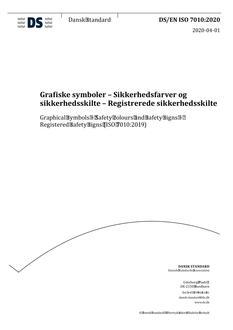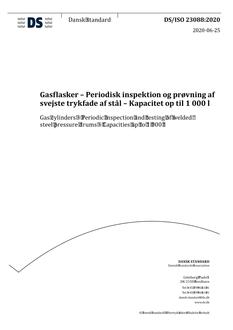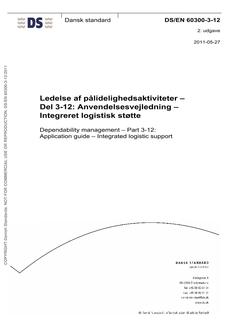-
-
Available Formats
- Availability
- Priced From ( in USD )
-
Available Formats
-
- Immediate download
- $119.00
- Add to Cart
-
- Printed Edition
- Ships in 1-2 business days
- $119.00
- Add to Cart
Customers Who Bought This Also Bought
-

DANSK DS/EN ISO 7010
Priced From $172.00 -

DANSK DS/ISO 23088
Priced From $64.00 -

DANSK DS/EN 60300-3-12
Priced From $101.00 -

DANSK DS/EN 300 392-12-4 V1.4.1
Priced From $143.00
About This Item
Full Description
This European Standard specifies a test method for determining the contribution made by applied passive fire protection systems to the fire resistance of structural steel members, which can be used as beams or columns. It considers only sections without openings in the web. It is not directly applicable to structural tension members without further evaluation. Results from analysis of I or H -sections are directly applicable to angles, channels and T-sections for the same section factor, whether used as individual elements or as bracing. This European Standard does not apply to solid bar or rod. This European Standard covers fire protection systems that involve only passive materials and not to reactive fire protection materials as defined in this document. The evaluation is designed to cover a range of thicknesses of the applied fire protection material, a range of steel sections, characterised by their section factors, a range of design temperatures and a range of valid fire protection classification periods. This European Standard contains the fire test procedures, which specifies the tests which should be carried out to determine the ability of the fire protection system to remain coherent and attached to the steelwork, and to provide data on the thermal characteristics of the fire protection system, when exposed to the standard temperature/time curve specified in EN 1363-1. The fire test methodology makes provision for the collection and presentation of data, which can be used as direct input to the calculation of fire resistance of steel structural members in accordance with the procedures given in EN 1993-1-2 and EN 1994-1-2. This European Standard also contains the assessment, which prescribes how the analysis of the test data shall be made and gives guidance on the procedures by which interpolation should be undertaken. The assessment procedure is used to establish: a) on the basis of temperature data derived from testing loaded and unloaded sect ...





